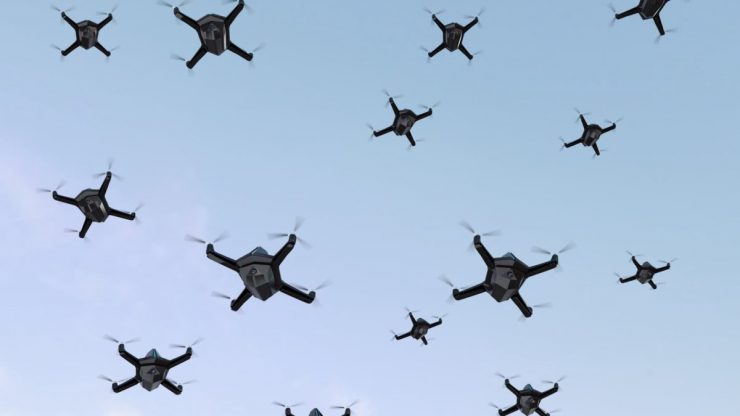The Federal Aviation Adminstration (FAA) Spectrum Office has approved testing of an “ADS-B like” solution for Unmanned Aircraft Systems (UAS) Remote Identification (RID) and Detect and Avoid (DAA) capability that leverages L-Band Distance Measuring Equipment (DME) protected spectrum. The solution, referred to as an Unmanned Detection System or UDS-B, is under developed by uAvionix Corporation, US manufacturer of Communications, Navigation, and Surveillance (CNS) equipment for manned and unmanned systems.
According to a press release by uAvionics, UDS-B leverages similar protocols and structures as Automatic Dependent Surveillance – Broadcast (ADS-B) but operates on a different, non-interfering frequency and contains message content that is adjusted to be appropriate for unmanned systems. The press release outlines the core principals of the UDS-B framework as follows:
- UDS-B leverages FAA authorized protected spectrum. This means both FAA and Federal Communications Commission (FCC) have to approve devices that transmit in this range, and approval can be specific to each operation. The use of this spectrum would also allow more secure and higher power transmission for longer ranges than devices operating in the Industrial, Scientific, and Medical (ISM) frequencies such as Bluetooth or Wi-Fi.
- The starting point for the message protocol is the Universal Access Transceiver (UAT) protocol of ADS-B. This protocol is understood and works well in deconflicting messages in a high traffic environment. It is expected that ultimately fields could be altered under industry initiative to expand the available unique addresses, include important fields like launch location or operator info, and address encryption.
- Existing ADS-B radios can be “retuned” to adjust to the new frequency. Existing antennas should work well. This opens the possibility to put “UDS-B In” receivers in manned aircraft, near airports, or develop worldwide crowdsourced receiver networks like those that can be found on www.flightradar24.com.
- If need be, “translators” much like today’s Traffic Information Service – Broadcast (TIS-B) and ADS-Rebroadcast (ADS-R) systems could be deployed to selectively translate a UDS-B target to and ADS-B target without years of development.
The key to success for the L-Band application is to utilize what is known as “DME Whitespace.” Overall, at any given time at a given location and altitude, dozens of DME channels in the 960-1215MHz range are unused owing to their known geographic distribution within the NAS, relatively short transmission range, and very low transmission rates. A section of airspace where DME frequencies are currently not in use is known as “DME Whitespace”. DME Whitespace represents available spectrum that can be used dynamically by low-altitude UAS for command and control or surveillance applications by leveraging modern digital radios that are location-aware and can change their operating frequencies prior to or during flight.
Initial testing will be conducted in Bigfork, MT at uAvionix headquarters.
(Image: uAvionics)
For more information visit:




